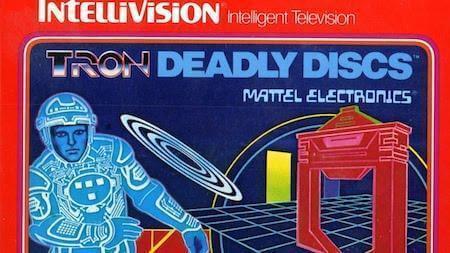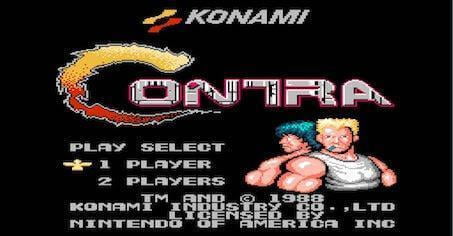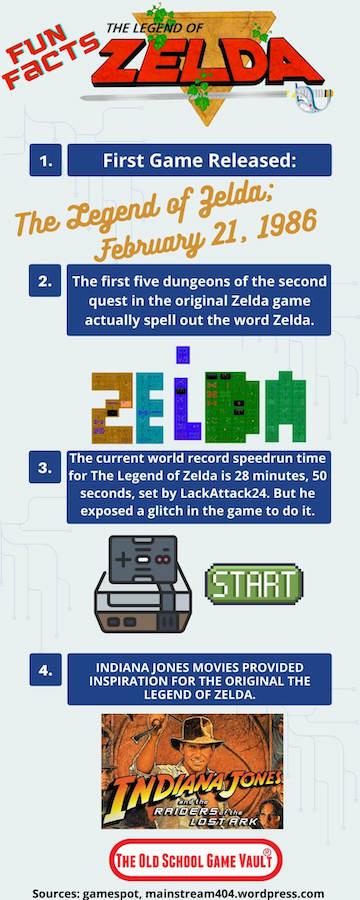Video Games of 80s - That defined a Generation of Gaming
 The 1980s was a great decade because it aspired to that which it was not. It thought it was the future, and it wasn’t; it claimed the stock market would make everyone rich, and it didn’t.
The 1980s was a great decade because it aspired to that which it was not. It thought it was the future, and it wasn’t; it claimed the stock market would make everyone rich, and it didn’t.
And after all the promises of wild monetary wealth and servant robots, all the 1980s mostly delivered were a bunch of “Rocky” sequels and a plasma globe from the Sharper Image. But aside from the kitsch—and the ‘80s produced a substantial amount—it will go down as a period of time notable for great optimism, great music and, of course, great video games. This was the time of the arcades and the rise of the home video game console; and for those of us who grew up during this era it was our decade, rendered in 8 bits.
With that in mind, here is a list of games that defined a generation.
Pac-Man
There isn’t much to say about “Pac-Man” that hasn’t already been written about ad nauseam over the years. Still, this arcade machine will always earn a top spot on any ’80s-video-game list not only for the iconic status of its protagonist, but because it was released in 1980 on the nose, kicking off an arcade revolution and setting the creative tone of video-game character development for generations to come.
Fun fact: Japanese game designer Toru Iwatani didn’t set out to make a title that appealed to the target demo of arcade-dwelling adolescent boys. No, Iwatani and developer Namco wanted to welcome young girls into the gaming tent, so they created a brightly colored world populated by a cute hero and mostly harmless villains. It was all soft-lines and femininity—and boys everywhere ate it up.
Super Mario Bros.
 Another obvious choice, but one that would be a crime to omit. “Super Mario Bros.”, released for the NES in 1995, is at least the most famous platformer of all time and is still regarded as one of the best. The title was that rare sequel that improved on its predecessor (1983’s “Mario Bros.”) By injecting the story with a wild fantasy narrative that saw mustached Mario and his Brother Luigi jumping their way through Mushroom Kingdom and looking to rescue Princess Toadstool.
Another obvious choice, but one that would be a crime to omit. “Super Mario Bros.”, released for the NES in 1995, is at least the most famous platformer of all time and is still regarded as one of the best. The title was that rare sequel that improved on its predecessor (1983’s “Mario Bros.”) By injecting the story with a wild fantasy narrative that saw mustached Mario and his Brother Luigi jumping their way through Mushroom Kingdom and looking to rescue Princess Toadstool.
Bear in mind that “Super Mario Bros.” was released at the nexus when arcades were dying and the home console market had yet to take off, so video games were all but dead—until an Italian plumber and his bro saved the day. Need further proof of Mario’s influence? You know you’ve reached the pinnacle of video-game fame when you spawn a truly awful Hollywood movie.
Q*bert
Surprisingly, this game’s titular and nasally endowed hero wasn’t designed by a creative team of Japanese forward-thinkers. It was American-made all the way, conceived by U.S. designers and published by Gottlieb, a Chicago company. As if “Pac-Man” didn’t blow enough minds in 1980, Q*bert, released in 1982, solidified the Golden Era of arcade gaming with its 3D-like isometric graphics that worked perfectly with the game’s objective: bouncing the orange hero around a pyramid of cubes.
In the end, Q*bert was one of the best arcade-joystick machines of the ‘80s and is still addictive to this day. And you know you’ve reached gaming’s hallowed ground when a late-90s/mid-2000s scratch DJ takes his stage name after you.
Pole Position
“Pole Position” was Toru Iwatani’s other legacy title at Namco. In a day and age where slick racing games spawn slick Hollywood racing films and all of it generates unthinkable amounts of cash, it’s strange to think that an aesthetically dinky 1982 Formula One simulator started it all. As an arcade machine it became wildly popular across the U.S., and by 1983, after being licensed to Atari, it conquered the home market as well.
Gamers loved that it was based on a real race, with real time trials and Grand Prix competition races. So despite the technological limitations of the time, it produced a surprisingly realistic driving experience, made even more fun by the addition (on the arcade machine at least) of a steering wheel, gearshift and pedals.
Here is some Pole Position GamePlay
Tron Deadly Discs
The feature film “Tron” was as much a product of the 1980s as the video game version “Tron” was a product of the feature film. That is to say, this decade and this title were made for each other, inexorably linked for all time. But that’s probably misleading—in reality, both the 1982 film and game were moderate successes, but their quality level wasn’t exceptional (hey, this is a list of games that defined the ‘80s, not the best games of the ‘80s).
a product of the feature film. That is to say, this decade and this title were made for each other, inexorably linked for all time. But that’s probably misleading—in reality, both the 1982 film and game were moderate successes, but their quality level wasn’t exceptional (hey, this is a list of games that defined the ‘80s, not the best games of the ‘80s).
The film story centered on a computer programmer who gets sucked into his own game, and the arcade coin-op machine focused on that game. Like the movie, arcade “Tron” featured “light cycles” that the players controlled in order to outmaneuver enemies while leaving light trails in their wake. There was certainly potential here to create a great title but, sadly, “Tron” the game didn’t even manage to live up to the coolest thing about it: its translucent blue joystick
Arkanoid
You could probably trace a direct line from all those people you see next to you on trains and buses playing mobile games to this strange and addictive SNES title. The version of “Arkanoid” released by Taito in 1986 is actually an update of Atari’s “Breakout” series of games from the decade previous.
The premise of the game was deceptively simple. Its basic, Pong-like mechanics involved moving a “paddle” (which was supposed to be a spaceship), across the bottom of the screen, bouncing a ball upwards and breaking colored tiles.
But the game was elevated by the fact that certain tiles corresponded to certain power-ups (or obstacles), and the many visual layers and the wide variety of level construction meant you could be glued to “Arkanoid” for days on end, breaking bricks like you were getting paid to do it. Some people might say “Tetris” was the original forerunner, but today’s mobile games seem to borrow a lot more from “Arkanoid” than they do that other ‘80s blocky behemoth.
Commando
Was “Commando” remarkable? Not really. Was it iconic? In its own way. This 1985 title from Capcom represents those vintage video games that were popular at the time but whose real legacies were paving the way for other better titles to come around.
This entry was a basic vertical scroller that featured “Super Joe,” a soldier always being choppered into hostile territory and forced to do battle with hordes of enemy combatants all by himself. To say the gameplay could be repetitive was an understatement. Still, there’s something inherently fun about running and gunning with limitless ammo and lobbing grenades into foxholes.
Dig Dug
The rise of arcade gaming in the early ‘80s led to an explosion of machines, all looking to be the next smash hit, a la Pac-Man. One game that seemed to borrow more than a little from the ghost-gobbling superstar was “Dig Dug,” which was released by Namco in 1982. This title follows the eponymous Dig Dug, a tunneling man dressed in white, as he hunts tomato-like monsters and dragons underground.
The game was just bizarre enough to find a niche, because rather than eat the monsters, Dig Dug inflated them until they exploded. It proved such a smash that it was released on virtually every home console of the time, including the Atari 2600 and the Commodore 64.
Commodore 64.
Contra
If you know what up-up-down-down-left-right-left-right-A-B-start means, then consider yourself a card-carrying member of the ‘80s gaming faithful. And really, how can you get more 1980s than naming your video game after one half of a political scandal that defined the decade?
This Konami classic is even more impressive considering that “Contra” the game doesn’t have anything at all to do with the El Salvadorian rebel group.
The game presented as a typical side-scrolling shooter, but it did a couple little things well. It allowed two gamers to play at the same time, which was unique for the time, and the direction pad controlled the player’s aiming as well as their movement, also a first. And if you typed in the not-so-secret code mentioned above, then all bets were off as you wreaked never-ending havoc on poor alien invaders. You can read our contra review - here
The Legend of Zelda
 It’s hard not to include the legacy titles on this list. Not only did “The Legend of Zelda,” released in 1986, kick off one of the greatest video-game franchises in history, the original 8-bit NES game still has high re-playability even in today’s world of billions of polygons.
It’s hard not to include the legacy titles on this list. Not only did “The Legend of Zelda,” released in 1986, kick off one of the greatest video-game franchises in history, the original 8-bit NES game still has high re-playability even in today’s world of billions of polygons.
That’s because it was one of the first NES titles to really push the envelope, combining action gaming with role playing and puzzle solving. It was such a smash that Nintendo went on to produce a staggering 17 other “Zelda” titles on their subsequent consoles. As of 2016, the “Zelda” franchise has sold some 75 million units.
Fun fact: in keeping with the theme of strange production decisions, the name “Zelda,” which was given to the titular princess, doesn’t have anything to do with the game’s storyline.
Co-creator Shigeru Miyamoto named his princess after Zelda Fitzgerald (wife of novelist F. Scott), whom he referred to as a “famous and beautiful woman from all accounts.” We all have our muse. Want to read more aobut the history of zelda? We got you covered - read more here
Donkey Kong
What can you say about this trailblazing platformer from 1982 that hasn’t been said in countless articles, testimonials and documentaries? The premise was wildly creative: Super Mario, making his first ever appearance, has to hop around platforms, dodging obstacles as he tries to save Princess “Pauline” from the titular antagonist, a teeth-gnashing gorilla with a penchant for barrel tossing.
Over the years competitive arcade Donkey Konging has spawned a cult following, and in 2016 the world record was set by competitive Gamer Wes Copeland, who achieved about as perfect a score on the machine as is possible, with 1,218,000 points.
This list represents a small sample of the most iconic games of the 1980s. These were just a few more iconic vintage video games that anyone from that generation will likely remember. What do you think, are there any more titles that deserve to be on the list?

Comments